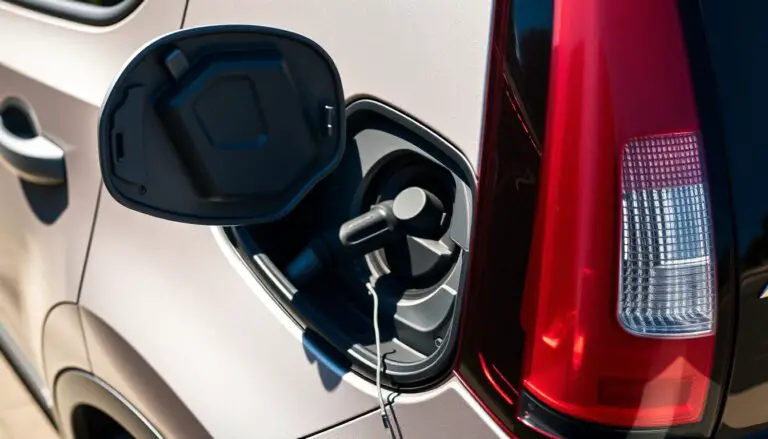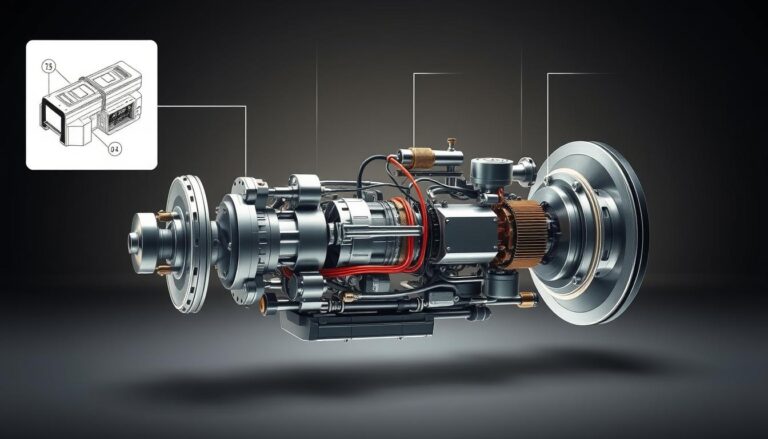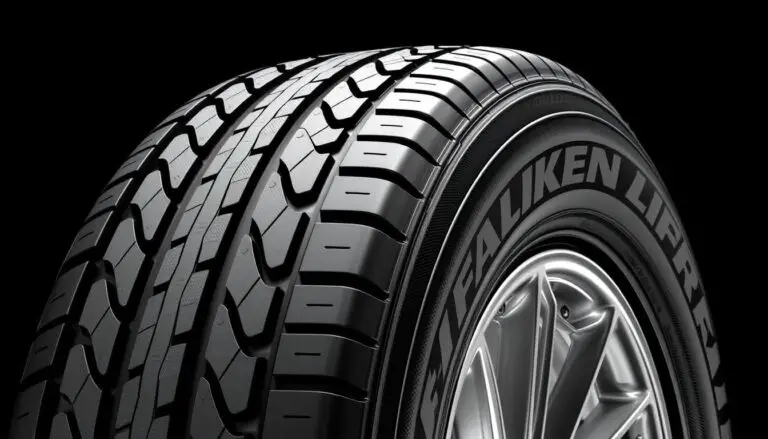Selecting the correct wheel rim size is crucial for vehicle performance and safety. The right rim measurements ensure proper fitment, affecting the overall handling and efficiency of the vehicle.
A vehicle’s wheel size is not just about aesthetics; it plays a significant role in its overall functionality. Incorrect rim size can lead to reduced fuel efficiency, compromised handling, and even safety hazards.
Understanding the importance of accurate wheel rim size selection is vital for vehicle owners and enthusiasts alike. This article aims to guide readers through the process of choosing the right fit for their vehicle.
Key Takeaways
- Understanding the significance of correct wheel rim size for vehicle performance.
- Factors to consider when selecting the appropriate rim measurements.
- The impact of incorrect vehicle wheel size on fuel efficiency and handling.
- Tips for ensuring proper fitment and safety.
- Guidance on choosing the right wheel rim size for your vehicle.
Understanding Wheel Rim Basics
The foundation of a well-functioning wheel assembly starts with the rim. A wheel rim is a critical component that holds the tire in place and supports the vehicle’s overall performance.
What Is a Wheel Rim?
A wheel rim is the outer edge of a wheel, designed to hold the tire securely. It’s typically made of metal, such as aluminum or steel, and comes in various sizes and designs to accommodate different tire types and vehicle specifications.
Why Rim Size Matters for Your Vehicle
The size of the rim is crucial because it affects the tire’s fitment, the vehicle’s clearance, and overall handling. Choosing the correct rim size ensures proper tire support, optimal vehicle performance, and safety. For more information on tire codes and specifications, you can visit Wikipedia’s Tire Code page.
Key Components of Rim Measurements
Rim measurements include diameter, width, offset, and bolt pattern. Understanding these components is vital for selecting the right rim for your vehicle.
| Rim Measurement | Description |
|---|---|
| Diameter | The distance across the rim, measured in inches. |
| Width | The distance between the inner edges of the rim, affecting tire fitment. |
| Offset | The distance between the rim’s mounting surface and its centerline. |
How to Read Rim Size: Decoding Wheel Measurements for Your Vehicle
Reading rim sizes is a vital skill for anyone looking to upgrade or replace their vehicle’s wheels. Understanding the measurements and codes on your rims is crucial for ensuring a proper fit and maintaining your vehicle’s performance and safety.
Standard Rim Size Format Explained
The standard rim size format is typically represented by a series of numbers and letters. For example, a common format is “17×8.5 ET35.” Here, “17” represents the diameter of the rim in inches, “8.5” is the width of the rim in inches, and “ET35” refers to the offset of the rim in millimeters.
Breaking Down the Numbers and Letters
Let’s break down the components of a rim size:
- Diameter: The diameter of the rim, measured in inches.
- Width: The width of the rim, also measured in inches.
- Offset (ET): The distance between the rim’s mounting surface and its centerline, measured in millimeters.
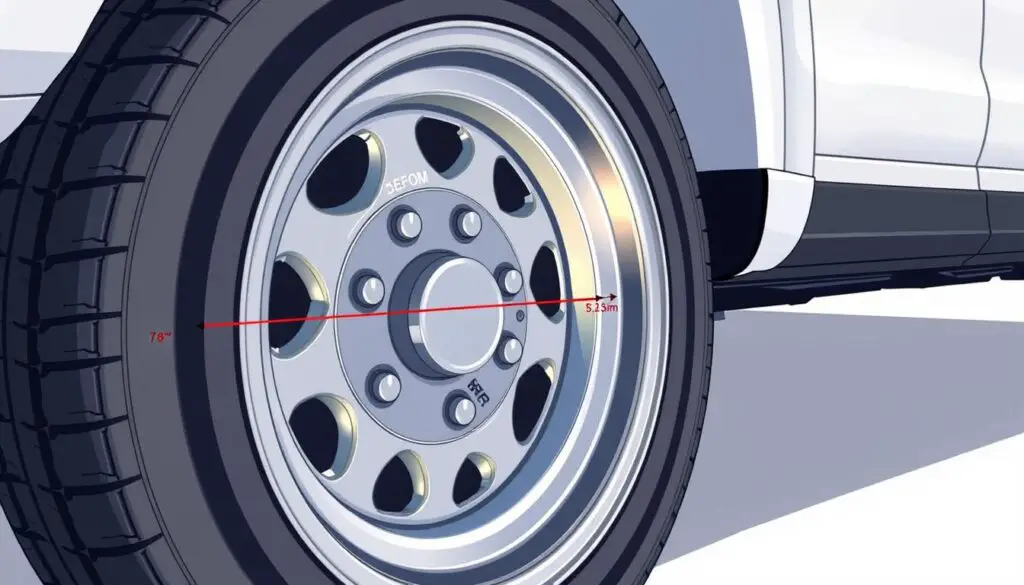
Where to Find Rim Size Information on Your Vehicle
You can find the rim size information in two primary locations:
Owner’s Manual Locations
Check your vehicle’s owner’s manual, typically in the section related to wheel specifications or maintenance.
Physical Markings on Existing Rims
Inspect your current rims for the size information, usually stamped on the back or inside of the rim.
| Rim Size Component | Description | Example |
|---|---|---|
| Diameter | The diameter of the rim in inches | 17 inches |
| Width | The width of the rim in inches | 8.5 inches |
| Offset (ET) | The offset of the rim in millimeters | ET35 |
Essential Rim Measurements You Need to Know
Understanding the essential rim measurements is crucial for selecting the right rims for your vehicle. Several key dimensions must be considered to ensure compatibility and optimal performance.
Diameter: The Primary Measurement
The rim diameter is a critical measurement, as it determines the size of the tire that can be fitted. It’s usually measured in inches and is a key factor in maintaining the vehicle’s overall performance and safety. For instance, a rim with a larger diameter can accommodate a larger tire, potentially improving handling and braking performance.
Width: Understanding Its Impact on Performance
Rim width is another vital measurement that affects the vehicle’s performance. It influences the tire’s profile and, consequently, the vehicle’s handling and stability. A wider rim can provide a larger contact patch, enhancing grip and cornering capabilities. However, it’s essential to check the tire compatibility with the rim width to ensure proper fitment.
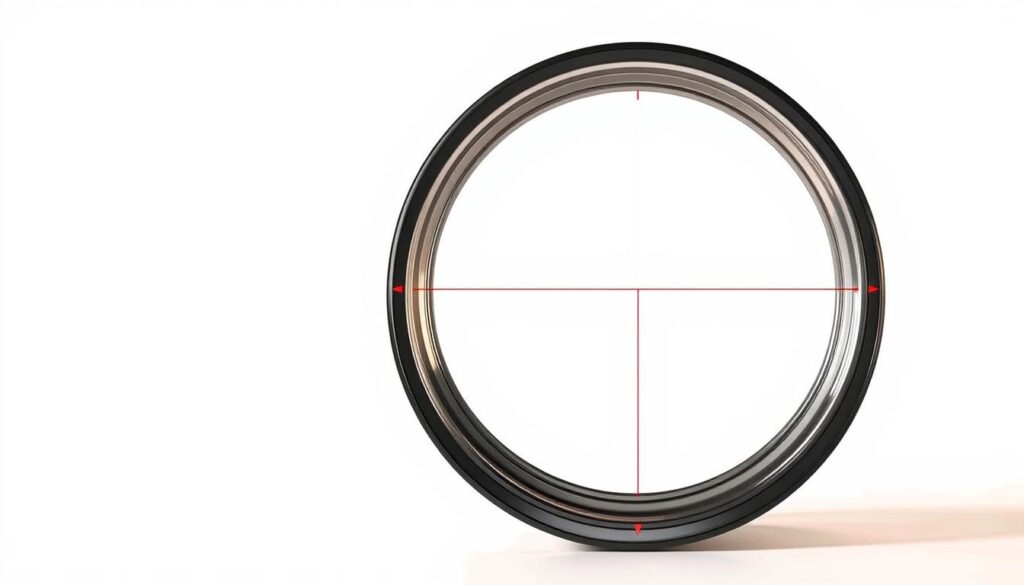
Offset and Backspacing Explained
The offset and backspacing of a rim are critical in determining how the wheel will sit in relation to the vehicle’s suspension and bodywork. Offset refers to the distance between the rim’s mounting surface and its centerline, while backspacing measures the distance from the mounting surface to the back of the rim. Proper offset and backspacing are crucial for ensuring clearance and preventing interference with suspension components or bodywork.
Bolt Pattern and Center Bore Significance
The bolt pattern and center bore are essential for ensuring the rim is properly secured to the vehicle’s hub. The bolt pattern refers to the number of bolts and the diameter of the circle they form, while the center bore is the hole in the center of the rim that fits over the hub. A correct bolt pattern and center bore are vital for safe and secure wheel mounting, preventing vibrations and potential wheel loss.
Vehicle-Specific Rim Considerations
The type of vehicle you drive plays a significant role in determining the most suitable rims for your needs. Different vehicles have distinct requirements that can affect the performance, safety, and overall appearance of your vehicle.
Cars vs. SUVs vs. Trucks: Different Requirements
Cars, SUVs, and trucks have varying rim requirements due to differences in their design, weight, and intended use. For instance, trucks often require rims that can handle heavier loads and more rugged terrain, while cars typically need rims that prioritize performance and fuel efficiency. SUVs, being a mix of both, demand rims that balance durability with on-road comfort.
OEM vs. Aftermarket Rim Options
When selecting rims, vehicle owners must decide between OEM (Original Equipment Manufacturer) and aftermarket options. OEM rims are designed to meet the manufacturer’s original specifications, ensuring a precise fit and maintaining the vehicle’s warranty. Aftermarket rims, on the other hand, offer a wider range of styles and sizes, allowing for customization but requiring careful selection to ensure compatibility and compliance with safety standards.
Seasonal Considerations: Winter vs. Summer Rims
Seasonal changes can necessitate switching between winter and summer rims. Winter rims are designed for cold weather conditions, typically featuring more aggressive tread patterns and specific materials for improved traction on snow and ice. Summer rims, focused on dry and warm conditions, prioritize performance and handling. Understanding these seasonal requirements can help vehicle owners make informed decisions about their rim choices.
Performance Modifications and Their Impact
Performance modifications, such as upgrading to larger rims or changing the offset, can significantly impact a vehicle’s performance and handling. While these modifications can enhance a vehicle’s appearance and performance capabilities, they must be done carefully to avoid adverse effects on suspension, steering, and overall safety.
Common Mistakes When Measuring and Selecting Rims
Understanding the common mistakes in rim measurement and selection can save you time and money. When it comes to measuring and selecting rims, precision is key to avoiding costly errors.
Misreading Measurement Units
One of the most common mistakes is misreading the measurement units. Rim sizes can be expressed in inches or millimeters, and confusing these units can lead to incorrect fits. Always double-check the units used in the specifications to ensure accuracy.
Ignoring Vehicle Specifications
Ignoring your vehicle’s specifications is another critical error. Each vehicle has specific requirements for rim size, offset, and bolt pattern. Consult your vehicle’s manual or manufacturer’s website to find the correct specifications.
Overlooking Clearance Issues
Overlooking clearance issues can result in rims that rub against the vehicle’s body or suspension components. Ensure there is adequate clearance by checking the rim’s offset and backspacing. Test fit the rims before finalizing your purchase to avoid potential issues.
Choosing Style Over Function
While the appearance of your rims is important, choosing style over function can lead to performance issues. Balance your desire for a specific look with the need for proper fitment and performance. Consider factors like load rating and durability when selecting rims.
Step-by-Step Guide to Measuring Your Current Rims
Accurate rim measurement is the foundation of making informed decisions about your vehicle’s wheels. To measure your rims correctly, you’ll need the right tools and a clear understanding of the process.
Tools You’ll Need for Accurate Measurements
To measure your rims accurately, you’ll need a few essential tools: a tape measure or caliper, a straight edge or ruler, and a notepad for recording your measurements. Ensure your tools are precise to avoid errors in your measurements.
Measuring Diameter Correctly
The diameter of your rim is a critical measurement. To measure it, place your tape measure or caliper across the rim, from one edge to the opposite edge, passing through the center. Make sure to measure across the center for an accurate reading.
Determining Width and Offset
Width and offset are equally important measurements. The width is measured from one inner edge to the other. The offset is determined by measuring from the mounting surface to the centerline of the rim. Use a straight edge to help you get these measurements right.
Recording and Using Your Measurements
Once you have your measurements, record them carefully. Creating a rim specification sheet can be very helpful for future reference.
Creating a Rim Specification Sheet
A rim specification sheet should include the diameter, width, offset, bolt pattern, and center bore diameter. This sheet will be invaluable when shopping for new rims or consulting with professionals.
Using Measurements When Shopping
When you’re ready to purchase new rims, your measurements will ensure you get the right fit. Double-check your measurements against the specifications of the rims you’re considering to avoid any compatibility issues.
Conclusion: Ensuring the Perfect Fit for Your Vehicle
Selecting the right wheel rim size is crucial for your vehicle’s performance and safety. By understanding the basics of wheel rim measurements and considering vehicle-specific requirements, you can ensure a perfect fit for your rims.
Accurate measurements are vital to achieving optimal performance. Check your vehicle’s documentation or consult with a professional to determine the correct vehicle wheel size for your needs.
When choosing rims, consider factors such as diameter, width, offset, and bolt pattern to ensure a perfect fit. This attention to detail will enhance your vehicle’s overall performance and safety.
By following the guidelines outlined in this article, you can confidently select the right rims for your vehicle, ensuring a perfect fit that meets your needs and enhances your driving experience with perfect fit rims.
FAQ
What is the importance of selecting the correct wheel rim size for my vehicle?
Selecting the correct wheel rim size is crucial for ensuring proper fitment, safety, and optimal performance of your vehicle. Incorrect rim size can lead to clearance issues, affect handling, and potentially cause damage to your vehicle.
How do I read the rim size on my vehicle’s existing rims?
Rim size information is usually stamped on the rim itself, typically on the back or outer edge. It may be represented in a format such as “17×8.5” or “17×7.5 ET35”, where the numbers represent the diameter, width, and offset.
What is the difference between OEM and aftermarket rims?
OEM (Original Equipment Manufacturer) rims are designed and manufactured by the vehicle’s original manufacturer, while aftermarket rims are produced by third-party companies. Aftermarket rims can offer different styles, materials, and performance characteristics.
Can I use the same rims for both summer and winter driving?
While it is possible to use the same rims for both summer and winter driving, it is not always recommended. Winter rims are specifically designed to handle snow and ice, and using dedicated winter rims can improve safety and performance.
How do I measure the diameter of my current rims?
To measure the diameter of your current rims, you will need a tape measure or caliper. Measure the distance across the rim, passing through its center, to determine the diameter.
What is the significance of offset and backspacing in rim measurements?
Offset and backspacing are critical measurements that determine how the rim will sit in relation to the vehicle’s suspension and bodywork. Incorrect offset or backspacing can cause clearance issues and affect handling.
Can I change my vehicle’s rim size without affecting its performance?
Changing your vehicle’s rim size can affect its performance, handling, and safety. It is essential to consult with a professional and ensure that any changes are compatible with your vehicle’s specifications.
How do I ensure that my new rims are compatible with my vehicle’s bolt pattern and center bore?
To ensure compatibility, check your vehicle’s owner’s manual or consult with a professional to determine the correct bolt pattern and center bore requirements. Measure your existing rims or consult with a rim specialist to ensure the new rims match these specifications.
